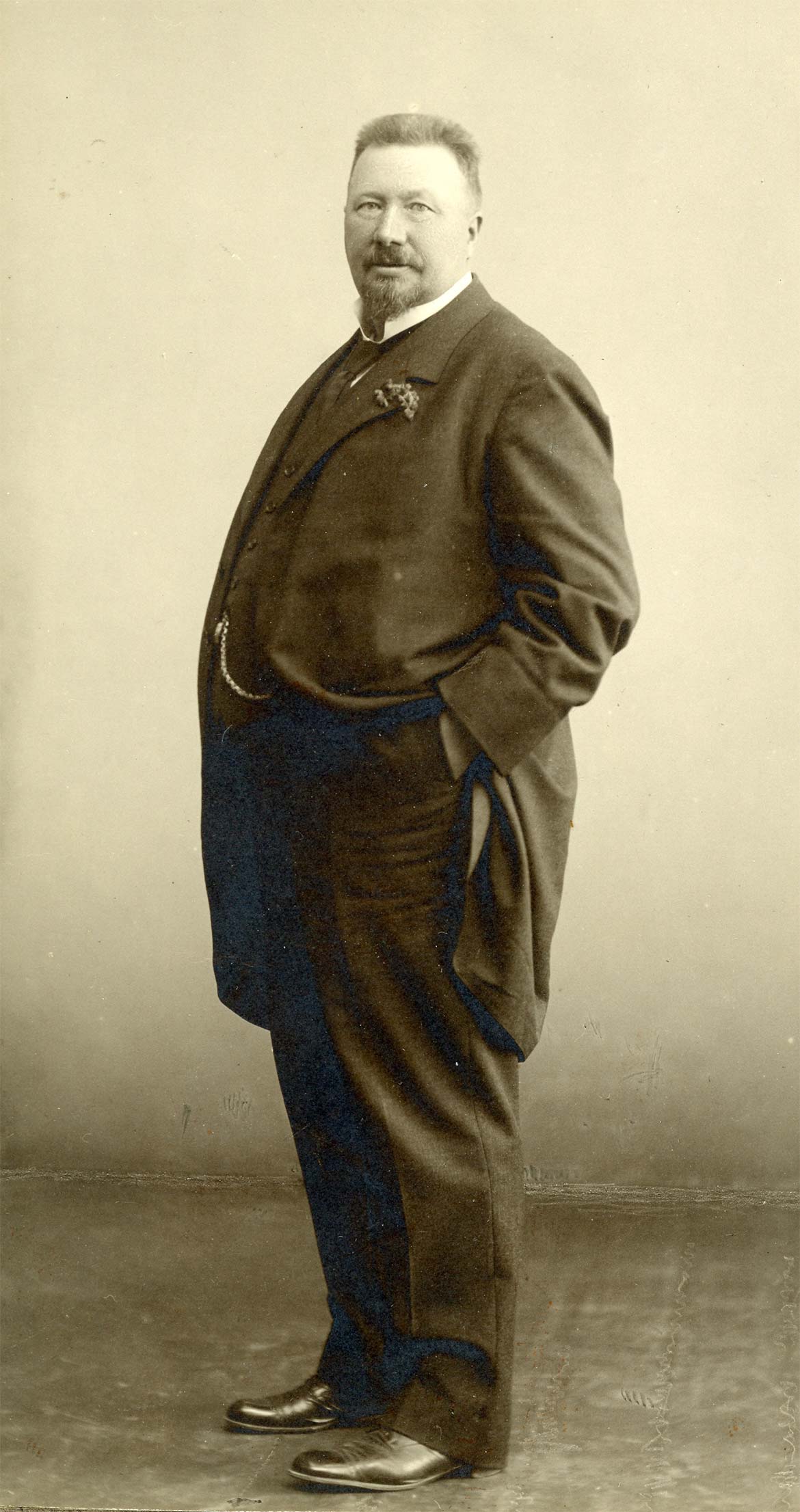Mads Rasmussen (1856-1916) was the founder of the Faaborg Museum. He was an important businessman in Faaborg and in 1888 had set up a food company based on research he had carried out into the latest production methods of canned food in the U.S. In 1896 he moved to an apartment in Konservesgården which would later become the first premises of the Faaborg Museum. In 1906 Rasmussen successfully merged his Faaborg factory with that of the long-established Copenhagen food company J.D. Beauvais and he himself relocated to the capital.
An Unusual Museum Takes Shape
The idea of creating a museum came about at a party given by Rasmussen and his wife Kristine (d. 22 February 1910) in Copenhagen. Their guests were the ‘Funen Painters’ inner circle including amongst others Fritz Syberg, Peter Hansen and Jens Birkholm. Together with Johannes Larsen they were all to become part of the Museum’s purchasing committee which, in turn, came to act as the steering group for the Museum’s acquisitions, their curation and the fixtures and fittings for the gallery. As such it was a collaborative project financed by Rasmussen. It was unheard of to let a group of artists create a museum in this way and the artists themselves were very conscious of such magnanimous support.
In 1910 the Museum opened in Rasmussen’s summer apartment in Konservesgården but by 1912 with the collection growing he decided to donate funds for a purpose-built museum on the site next to his home.
Mads Rasmussen assumed a relatively low profile keeping himself to himself in contrast to many other museum founders. Yet he retains a prominent position in the Museum owing to Kai Nielsen’s portrait sculpture of him located in the domed gallery room. The work shows him relaxed and smiling. The portrait sculpture further acknowledges his professional work as a food-manufacturer with the figure placed on a mill-wheel plinth while naked children gather apples at his feet.



